If you've been using nasal sprays for weeks, months, or even years, you might be trapped in a dangerous cycle without even knowing it. What started as quick relief for stuffy nose has likely become a daily habit that's actually making your congestion worse over time.
What You'll Learn
- Why decongestant sprays become addictive after just 3 days of use
- How to tell the difference between safe and dangerous nasal spray types
- The warning signs that your nasal spray is causing more harm than good
- A proven exit strategy to break free from spray dependency safely
- Natural alternatives that provide lasting relief without the risks
When Relief Becomes the Problem
Here's what happens when you use decongestant sprays like Afrin or Neo-Synephrine for more than three days. These powerful medications shrink blood vessels in your nose to open airways. But your body fights back. It creates more blood vessels and makes existing ones larger. This is called rebound congestion or rhinitis medicamentosa.
The cruel irony? The spray that once gave you relief now causes the very problem it's supposed to fix. You need more spray more often just to breathe normally. Many users don't realize they're caught in this trap until they try to stop and can't breathe at all.
Not All Nasal Sprays Are Created Equal
Understanding spray types is crucial for your nasal health. Decongestant sprays contain oxymetazoline or phenylephrine. These create dependency fast. They work within minutes but should never be used longer than three days.
Steroid sprays like Flonase or Nasacort are different. They reduce inflammation slowly over days or weeks. These are safe for long-term use when used as directed. However, they won't help during acute congestion and can cause nosebleeds or dryness if overused.
Saline sprays are the safest option. They contain only salt water and can be used as often as needed. They help thin mucus and keep nasal passages moist without any risk of dependency.
The Real Cost of Long-Term Decongestant Use
Sarah used Afrin for five years before realizing the damage. "I couldn't go anywhere without my spray," she recalls. "I kept bottles in my car, purse, and bedside table. When I finally tried to quit, I couldn't breathe for days."
Long-term decongestant use can cause permanent changes to your nasal tissues. The delicate turbinates inside your nose can become swollen and damaged. Some people develop chronic inflammation that requires surgery to fix. Others find their sense of smell is permanently reduced.
The dependency cycle gets worse over time. What once lasted hours now barely works for minutes. Users often need multiple doses throughout the night just to sleep. This pattern can continue for years, causing ongoing damage.
Your Safe Exit Strategy
Breaking free from nasal spray dependency requires patience and the right approach. Going cold turkey often fails because the rebound congestion is too severe. Instead, try this gradual method that helps many people succeed.
Start by diluting your spray with saline solution. Mix equal parts for the first week. Then increase the saline ratio each week until you're using only saline. This helps your nasal tissues adjust slowly while still providing some relief.
Red light therapy can be incredibly helpful during this transition. The NoMore® Colds device uses specific light wavelengths to reduce inflammation naturally. This helps manage the withdrawal symptoms that make quitting so difficult. Many users find it makes the process much more comfortable.
Support your healing with other safe methods too. Use a humidifier at night. Try nasal irrigation with a neti pot. Sleep with your head elevated. These simple steps help reduce congestion without chemicals.
Spray Safety Guide
Follow these rules to protect your nasal health. Never use decongestant sprays for more than three consecutive days. Read labels carefully and know what type of spray you're using. If you need daily relief for more than a week, see a doctor to find the root cause.
For chronic congestion, address underlying issues like allergies or sinus inflammation. Treating the cause gives lasting relief without the risks of dependency. Many people find they no longer need any sprays once their underlying condition is properly managed.
Remember that healing takes time. Sarah's recovery took several months, but she says it was worth every difficult day. "I can breathe naturally again," she shares. "I wish I had known about the risks sooner, but I'm grateful I found a way out."
Break spray dependency with NoMore® Colds and discover how red light therapy can help you breathe freely again without the dangerous cycle of nasal spray addiction.


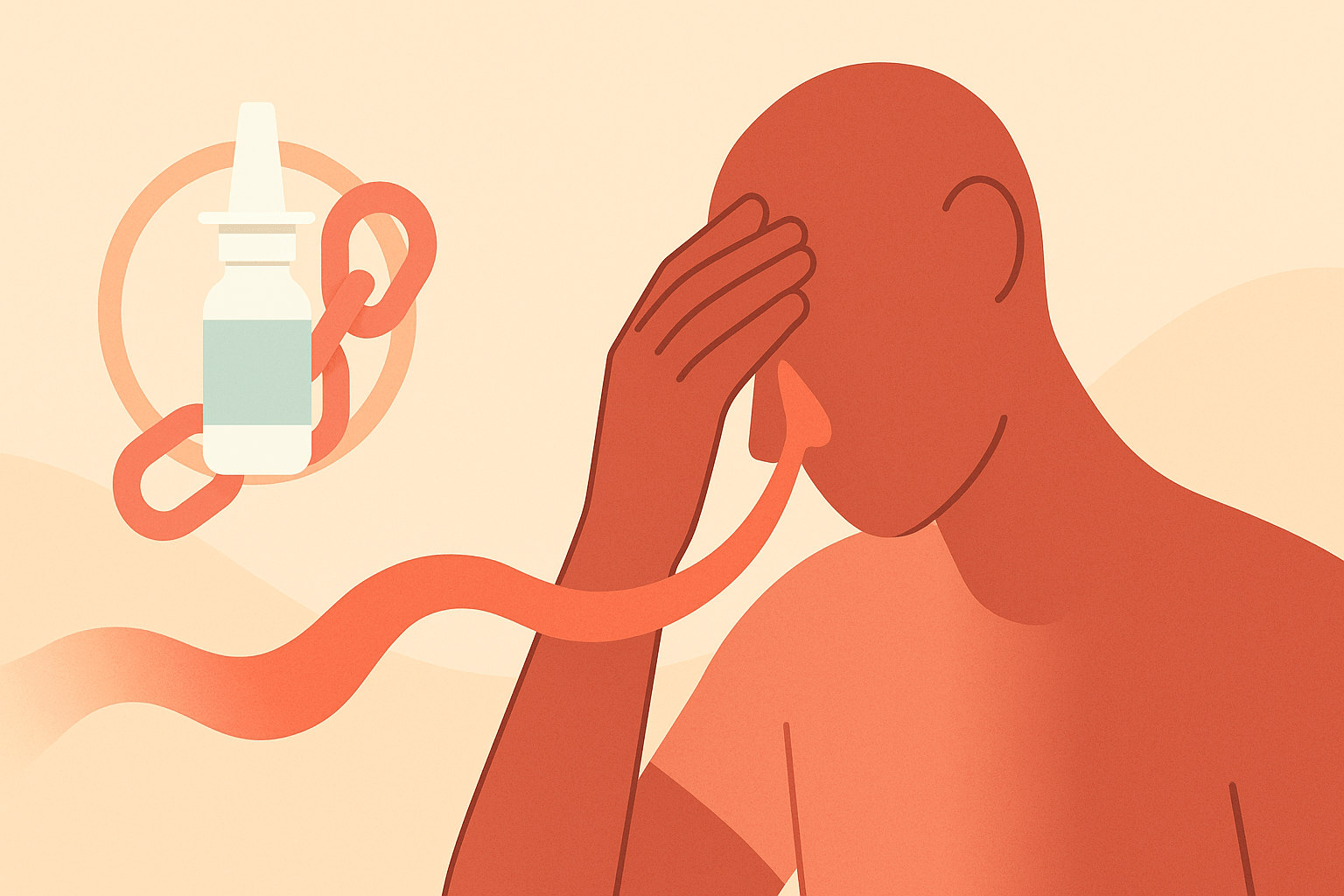

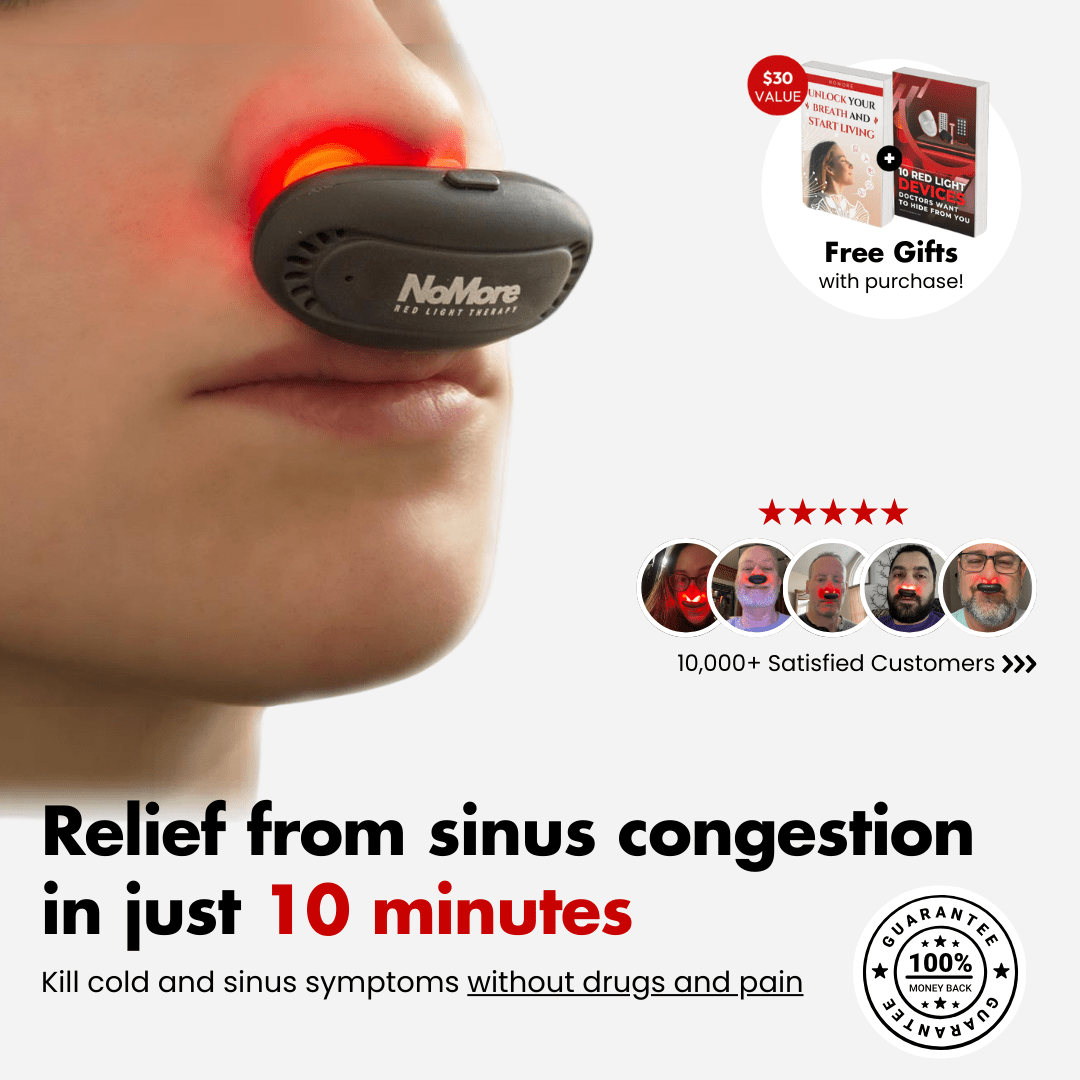

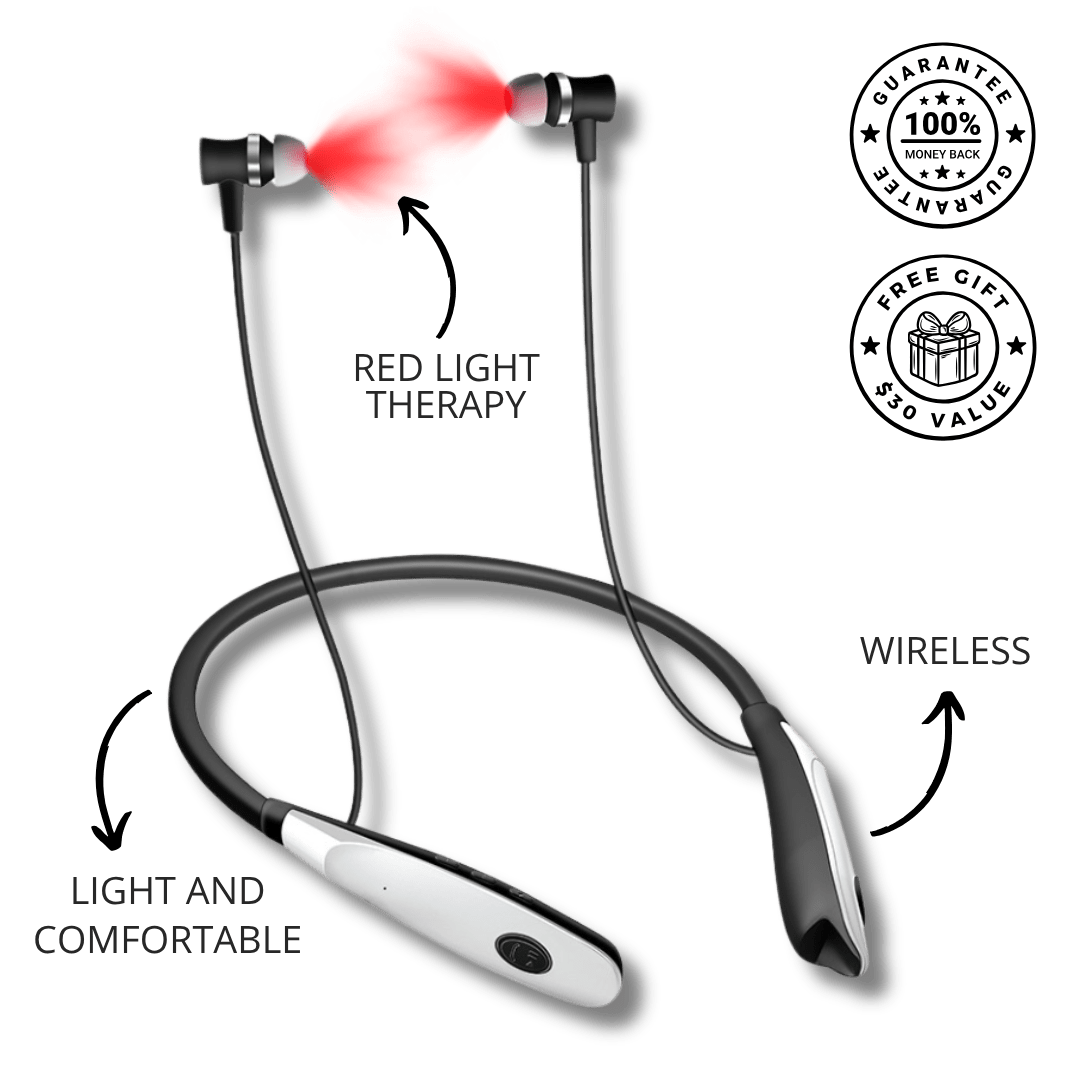
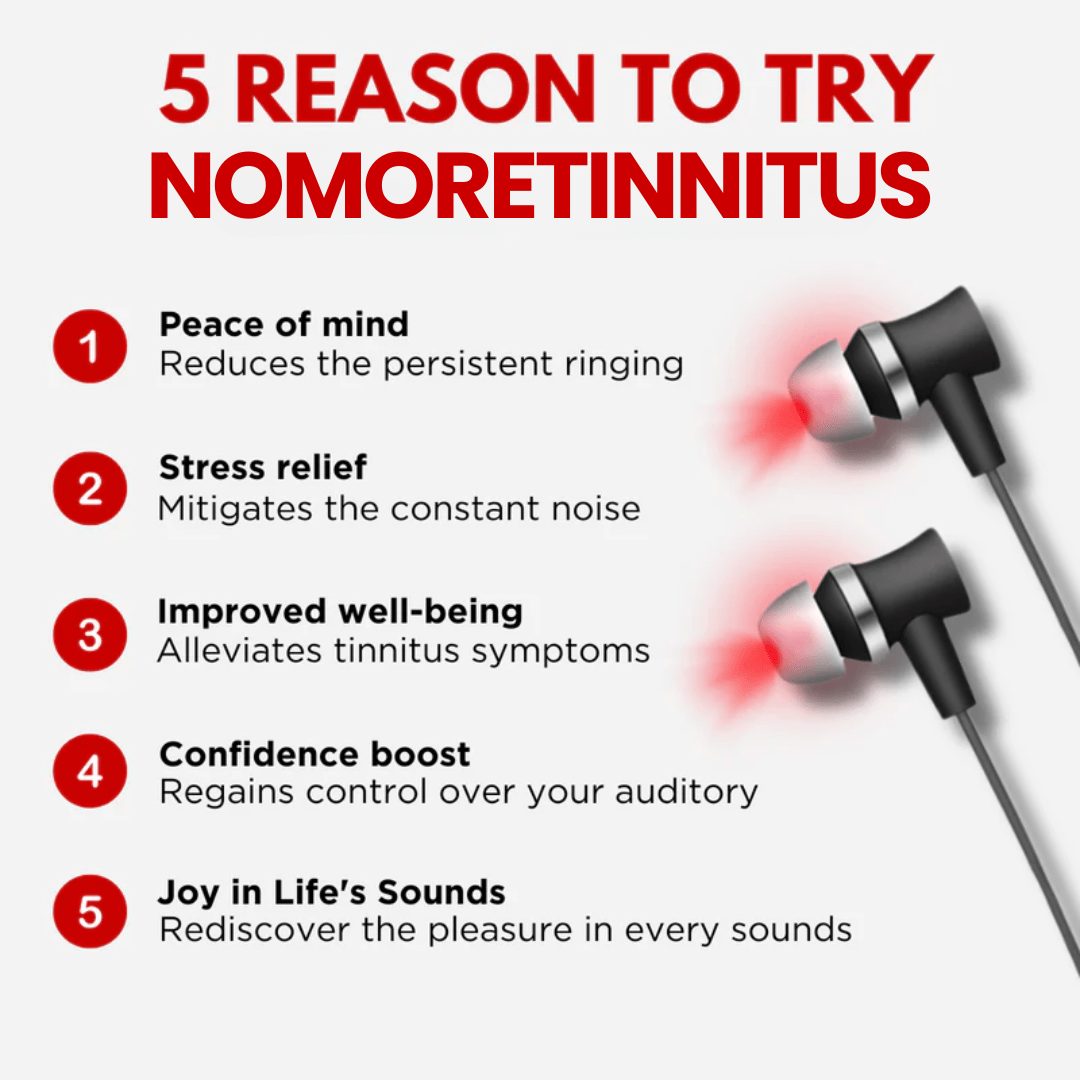

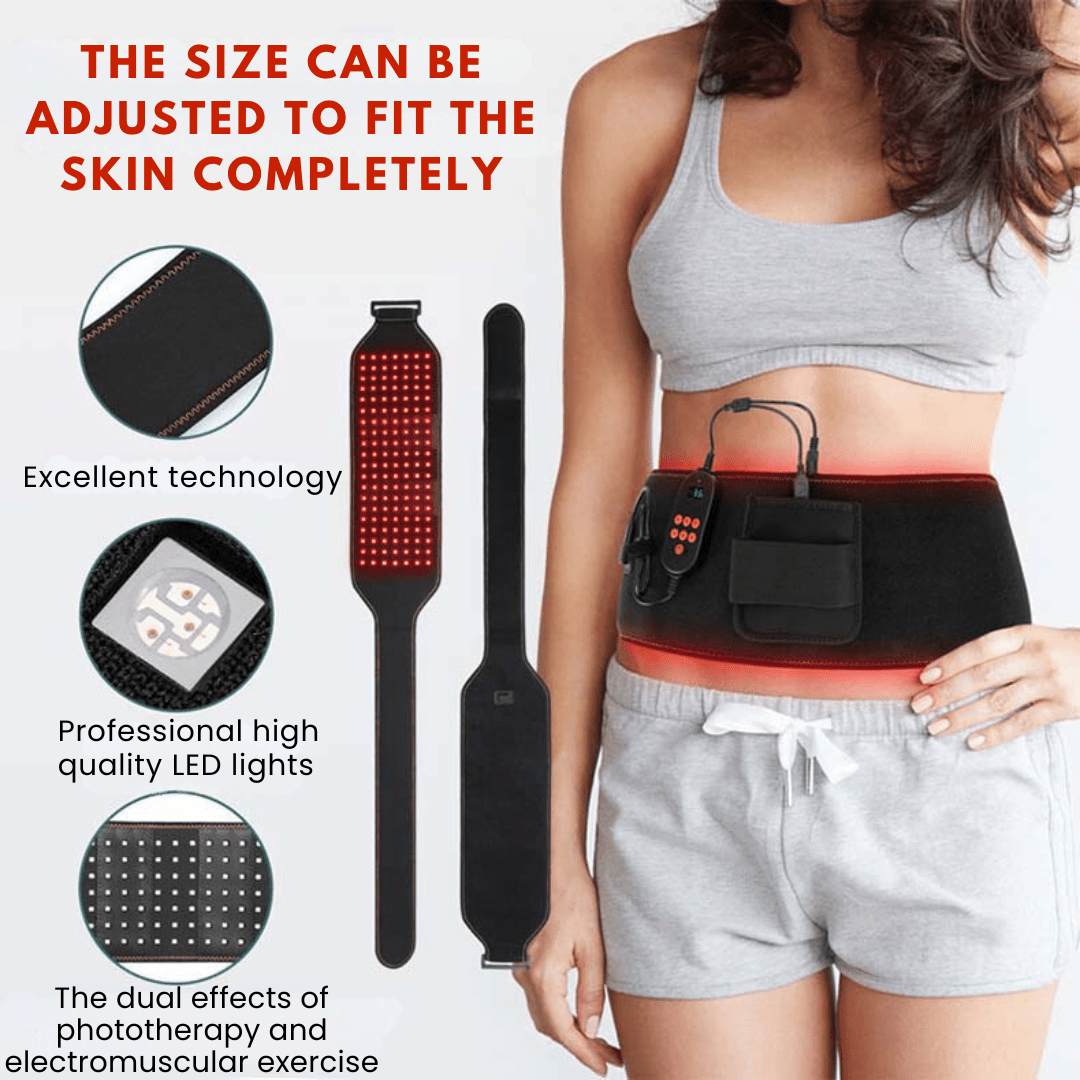
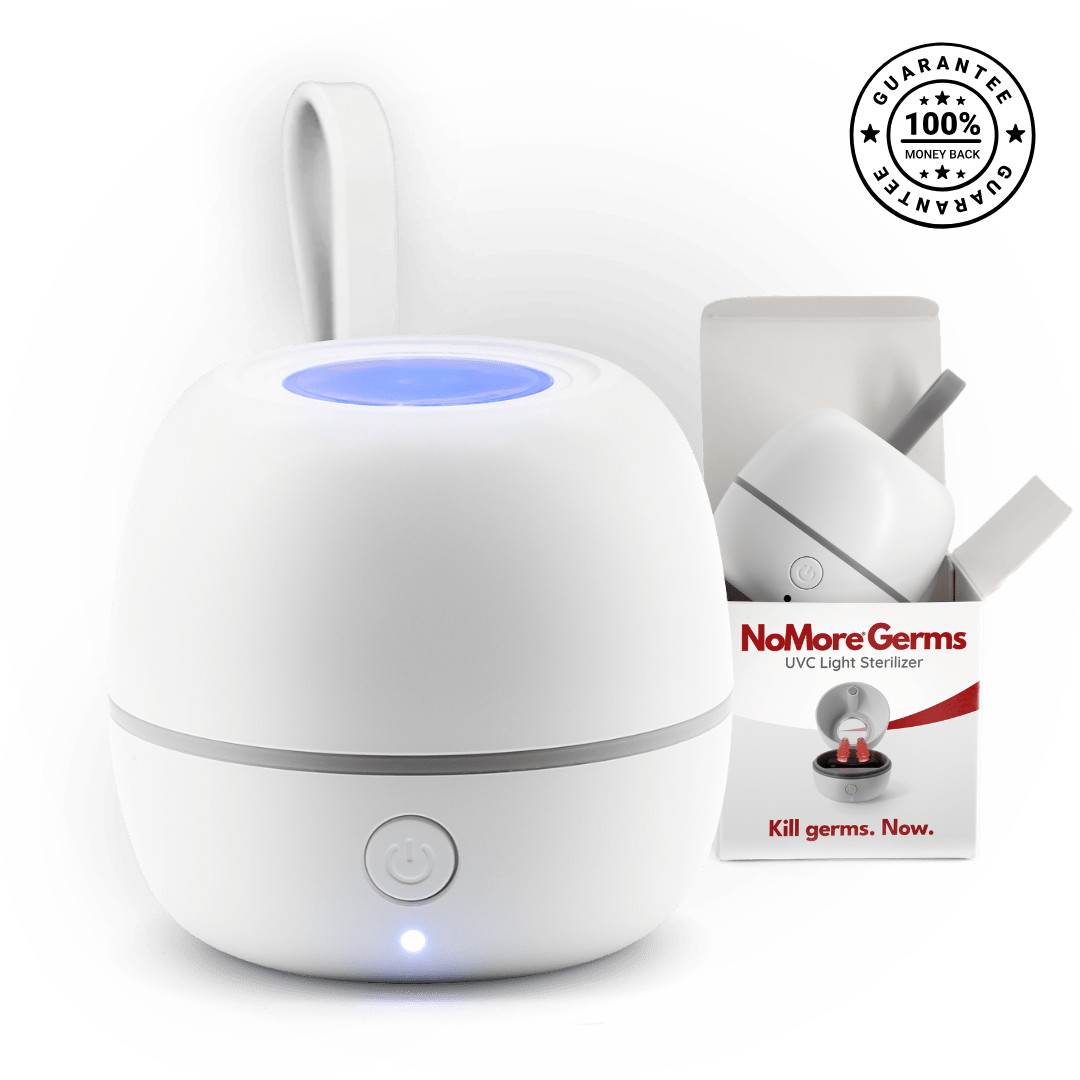
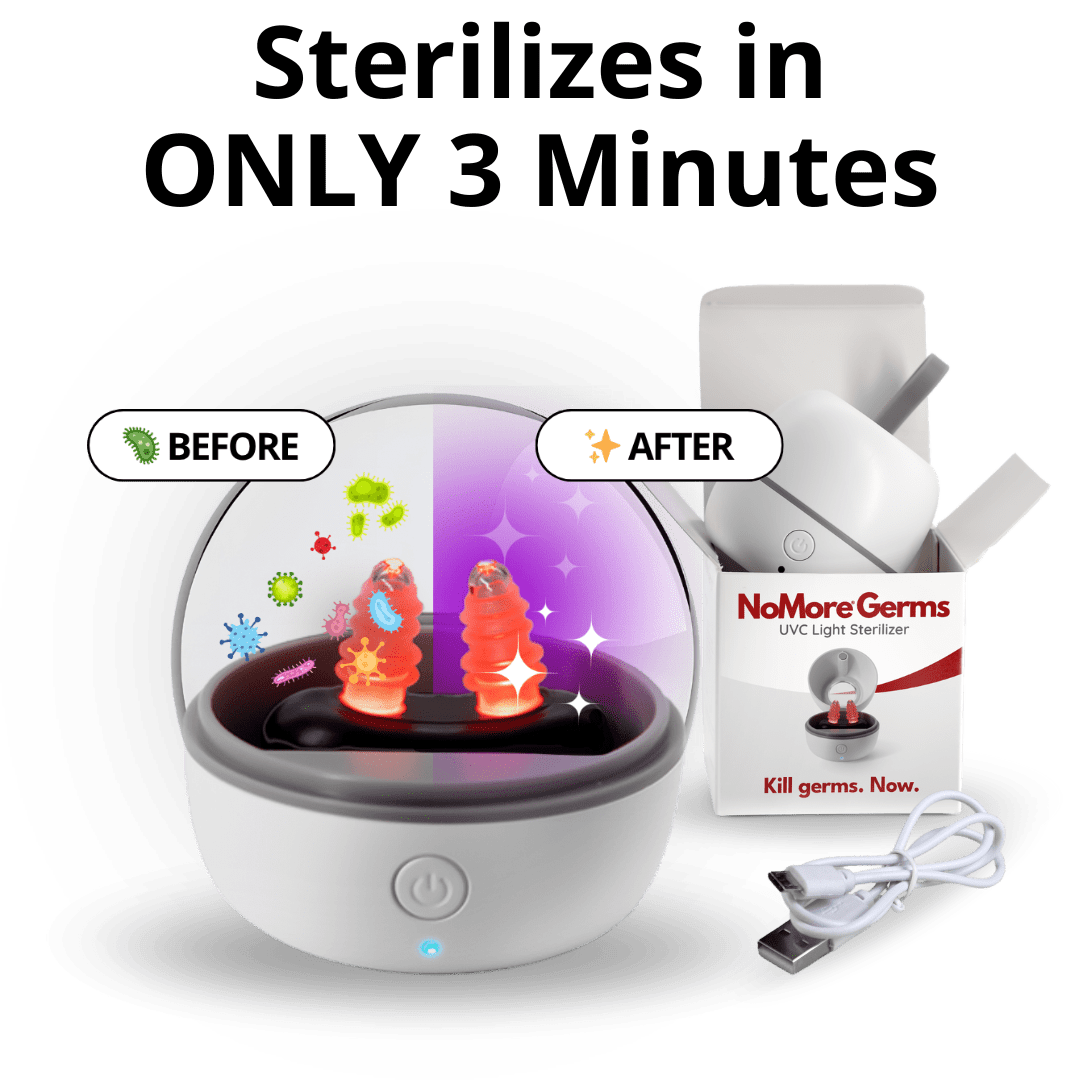
Leave a comment
This site is protected by hCaptcha and the hCaptcha Privacy Policy and Terms of Service apply.